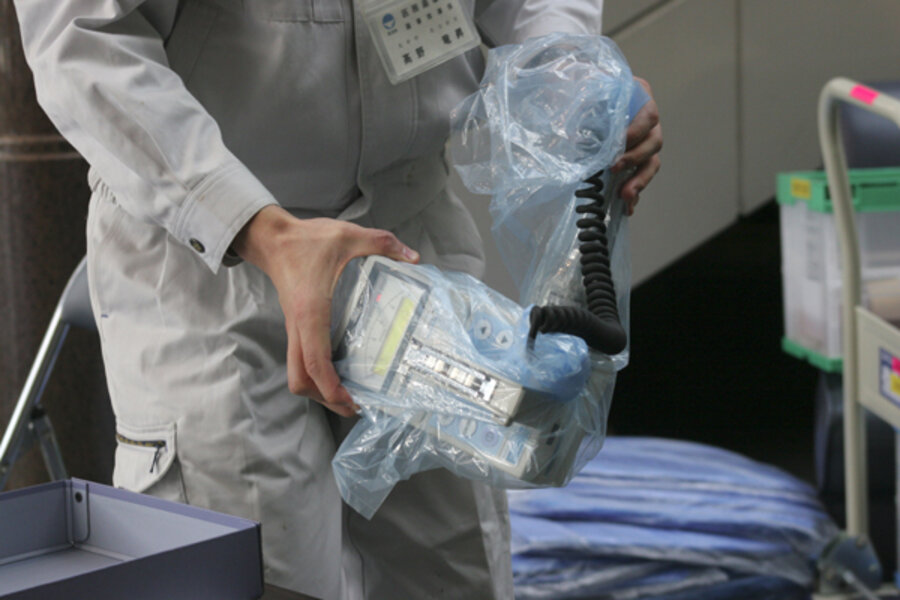At Japan's radiation checkpoints, relief when tests are clean
Loading...
| Niigata, Japa
Seven-year-old Luna Endo took off her pink sneakers and handed them to a white-coated technician dressed in forbiddingly protective clothing – a disposable cap, face mask, surgical gloves taped at the cuff and plastic bootees.
The technician ran a radiation detector over the shoes, and then slowly scanned the little girl’s clothes and hands. The reading came up clean. Luna’s mother, Ikoko, looked relieved.
“She’s been feeling unwell so I brought her to be checked,” explains Mrs. Endo. The family lives about 30 miles from Daiichi, the site of four stricken nuclear reactors at Fukushima that have been leaking radioactivity since last week’s earthquake and tsunami. "I was really worried about her. Perhaps it’s just a cold."
Radiation levels at the troubled plant itself have been high enough in recent days to force firemen to occasionally abandon efforts to pour water into the reactors and cooling ponds where nuclear fuel rods are threatening to overheat. The Japanese government, however, says that no civilians have been exposed to harmful levels of radiation.
“There is no fear of contamination among local residents,” says a spokesman for the Education ministry, which is organizing the radiation tests. “No one has been found with levels that pose a threat to health.”
The crippled reactors have been venting radioactive steam since the accident last Friday, and at one stage earlier this week radiation levels in Tokyo were found to be higher than normal. But the wind has been blowing most of the radioactivity out to sea.
The makeshift radiation detection center in the foyer of a municipal theater here, where Luna Endo was checked, is one of six that have been set up in Niigata prefecture on the west coast of Japan. The province is currently hosting 15,000 people displaced by the tsunami or by the evacuation of all residents within a 12-mile radius of Daiichi.
The team of 15 technicians at the center have tested 1,500 evacuees from the area around the Fukushima Daiichi plant since they began work Tuesday, according to the team’s leader Junichi Norii.
“About a dozen” of them have shown sufficient signs of contamination to have been asked to leave their clothes at the center and to wash their hands and faces, says Norii, “but all the rest have been normal. Nobody who has come here has had levels we consider harmful to the human body.”
“This is not a place where we are trying to evaluate overall radiation levels, or to gather all the data,” explains Mr. Horii, a Niigata municipal health authority official. “People are not obliged to be tested, but they can come if they are anxious. We are taking care of the mental health of people who have come from very difficult situations.”





